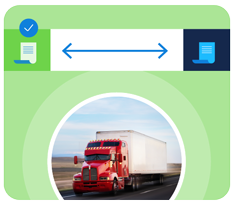Maximizing the potential benefits of your leasing program extends beyond fulfilling contractual obligations. It’s about strategically maneuvering through the lease lifecycle to amplify efficiency and cost-effectiveness. Consider lease optimization as a pivotal tool—it’s not only about adhering to commitments; it’s about exploiting these contracts to elevate your organization’s financial robustness and operational efficiency. This becomes an astute business strategy that can profoundly enhance your company’s bottom line and free cash flow. It involves a proactive approach to managing leases, ensuring that every phase, from selection to termination, is optimized for cost savings and risk mitigation. This holistic perspective ensures that all stakeholders, including finance, treasury, procurement, operations, and real estate teams, work collaboratively to extract maximum value from every lease, turning it into an opportunity for growth and stability.
What is lease optimization?
Lease optimization refers to the strategic management of the leasing program and the overarching lease lifecycle to extract maximum value and efficiency through the entire process for both real estate and equipment leases . This process involves detailed lease optimization analysis to identify opportunities for cost savings, improve space utilization, reduce carbon usage, and align leasing strategies with business objectives. The importance of lease optimization lies in its ability to transform a fixed cost into a strategic asset, contributing positively to a company’s bottom line.
How is it different from lease compliance?
While lease compliance is about adhering to legal and financial regulations, lease optimization goes a step further. Compliance ensures that companies meet the necessary standards and reporting requirements for ASC 842, GASB 87, GASB 96 and IFRS 16, such as recognizing lease assets and liabilities. In contrast, optimization involves actively managing these leases to achieve operational and financial efficiency during their entire lifecycle. It’s an approach that turns compliance into a strategic opportunity.
How to fully optimize your lease portfolios
To fully optimize your lease portfolio, consider the following steps:
- Conduct comprehensive audits: Regularly review lease agreements to identify opportunities for renegotiation or termination. Stay ahead of end-of-term requirements and dates.
- Implement strategic planning: Align leasing strategies with broader business goals, future growth, and net-zero plans.
- Utilize technology: Adopt advanced tools for real estate and equipment lease optimization analysis to gain insights into portfolio performance, such as standard automated lease versus buy analysis and stakeholder scorecards.
- Focus on flexibility: Negotiate terms and end-of-term options that offer adaptability to changing business needs. Leverage automated tools to request RFPs and standardized lease contract paperwork to get lessors to submit competitive bids for new lease lines.
- Integrate lease and financial data: Ensure seamless integration of leasing data into financial systems for better decision-making.
How lease optimization can benefit your company
Mastering the art of lease optimization can transform your business. It’s not only a matter of checking boxes for compliance; it’s also a matter of releasing the latent possibilities in your lease portfolio. Consider transforming a typical cost center into a strategic advantage. That is the strength of lease optimization. It’s a strategy that offers many advantages, all tailored to improve your company’s operational and financial performance.
Cost savings
Through renegotiation and better management, lease optimization can significantly reduce leasing costs and carbon usage.
Enhanced flexibility
Optimizing leases provides companies with the flexibility to adapt to market changes and evolving business needs.
Strategic asset management
Look for ways to turn real estate and equipment leases into strategic assets, contributing positively to business operations.
Improved decision-making
With detailed analysis and insights, companies can make more informed decisions regarding their leasing strategies.
How LeaseAccelerator enables optimization
LeaseAccelerator not only ensures compliance with leasing standards but also helps with optimization. It offers comprehensive features for lease lifecycle optimization, enabling businesses to effectively manage and analyze their lease portfolios. With LeaseAccelerator, companies can easily transition from compliance to optimization throughout the lease lifecycle, leveraging the software’s capabilities to gain a competitive edge. The software simplifies complex lease data, making it easier to identify optimization opportunities and make strategic decisions.
Start with a demo of LeaseAccelerator to learn how you can begin optimizing your lease data.






